Obtaining a higher education is a valuable investment in one’s future, but the rising cost of tuition and living expenses can often be a barrier for many students. Luckily, the Federal Direct Subsidized Loan program offers a vital tool for students seeking affordable education. In this comprehensive guide, we will provide an in-depth understanding of Federal Direct Subsidized Loans, highlighting their benefits, differences from unsubsidized loans, eligibility criteria, and repayment options. By the end of this article, you’ll be well-equipped to make informed decisions about financing your education.
Federal Direct Subsidized Loans: An Overview
Federal Direct Subsidized Loans are a type of financial aid provided by the U.S. Department of Education to undergraduate students with demonstrated financial need. These loans come with several benefits that make them an attractive option for students, setting them apart from other forms of financial aid.
Benefits of Federal Direct Subsidized Loans:
-
Interest Subsidy: One of the most significant advantages of Federal Direct Subsidized Loans is the interest subsidy. The government pays the interest on these loans while the borrower is in school, during the grace period, and during deferment periods. This means that the loan balance does not increase during these periods, making it a more affordable option in the long run.
-
Flexible Repayment Options: Federal Direct Subsidized Loans offer flexible repayment options. Students can defer repayment until after graduation or dropping below half-time enrollment. Additionally, there are various repayment plans available, including income-driven repayment plans that base monthly payments on income and family size.
Challenges of Federal Direct Subsidized Loans:
-
Limited Eligibility: These loans are only available to undergraduate students who demonstrate financial need. Those who don’t meet the financial need requirements may not qualify for this type of loan.
-
Loan Limits: Federal Direct Subsidized Loans have annual and aggregate loan limits, which can restrict access to funds for students who require additional financial assistance. Borrowers must carefully consider their borrowing needs.
Factors Influencing Eligibility:
Understanding the factors that can change the outcome of your Federal Direct Subsidized Loan application is crucial. The Expected Family Contribution (EFC) determined by the Free Application for Federal Student Aid (FAFSA) plays a significant role in eligibility. Lower EFC values increase the likelihood of receiving higher amounts of subsidized loans.
Need-Based Assistance:
To qualify for Federal Direct Subsidized Loans, students must demonstrate financial need. Financial need is determined by calculating the difference between the cost of attendance and the EFC as determined by the FAFSA. The cost of attendance includes various expenses, and the EFC is based on income, assets, family size, and the number of family members attending college.
Interest-Free Payments:
Federal Direct Subsidized Loans stand out because they do not accrue interest while the borrower is in school, thanks to the government’s interest payments during specific periods. This significantly reduces the overall cost of borrowing compared to other loans where interest accrues and capitalizes while in school.
Loan Limits and Their Impact:
Federal Direct Subsidized Loans come with annual and aggregate loan limits, and these limits can impact a student’s ability to finance their education. It’s crucial for students to assess their borrowing needs and explore alternative funding sources to bridge any funding gaps.
Repayment Options:
After graduation or dropping below half-time enrollment, students are required to start repaying their Federal Direct Subsidized Loans. Fortunately, several repayment options are available, offering flexibility and affordability.
Conclusion:
Federal Direct Subsidized Loans are a vital tool for students seeking affordable education. They offer numerous benefits, including interest-free payments, flexible repayment options, and eligibility for need-based assistance. While there are challenges and factors that can impact the outcome, it’s important for students to carefully consider their borrowing needs, explore alternative sources of funding, and make informed decisions about their education financing. By utilizing Federal Direct Subsidized Loans effectively, students can reduce the burden of student loan debt and pave the way for a brighter future.
Key Takeaways for Students:
-
Federal Direct Subsidized Loans are a type of financial aid provided by the U.S. Department of Education to undergraduate students with demonstrated financial need.
-
These loans offer benefits such as interest-free payments and flexible repayment options.
-
Financial need is determined by the Expected Family Contribution (EFC) calculated through the Free Application for Federal Student Aid (FAFSA).
-
Loan limits exist for Federal Direct Subsidized Loans, which can impact a student’s ability to finance their education.
-
Students should explore repayment options, ask key questions to financial institutions, and consider their long-term financial goals when choosing a repayment plan.







